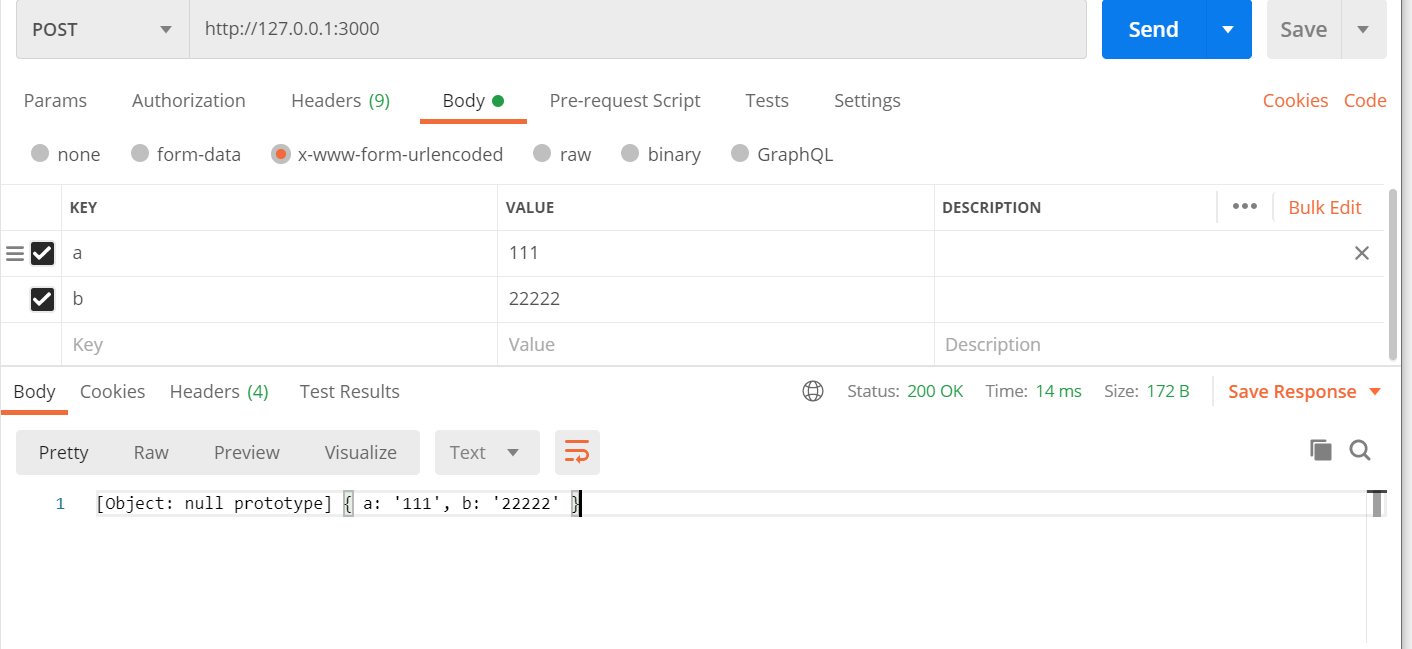一.获取GET请求内容
由于GET请求直接被嵌入在路径中,URL是完整的请求路径,包括了?后面的部分,因此你可以手动解析后面的内容作为GET请求的参数。
node.js 中 url 模块中的 parse 函数提供了这个功能。
var http = require('http');
var url = require('url');
var util = require('util');
http.createServer(function(req, res){
res.writeHead(200, {'Content-Type': 'text/plain; charset=utf-8'});
res.end(util.inspect(url.parse(req.url, true)));
}).listen(3000);
在浏览器中访问 http://127.0.0.1:8888/index?a=b&c=d然后查看返回结果:
Url { protocol: null, slashes: null, auth: null, host: null, port: null, hostname: null, hash: null, search: '?a=b&c=d', query: [Object: null prototype] { a: 'b', c: 'd' }, pathname: '/index', path: '/index?a=b&c=d', href: '/index?a=b&c=d' }
二.获取 URL 的参数
我们可以使用 url.parse 方法来解析 URL 中的参数,代码如下:
//
var http = require('http');
var url = require('url');
var util = require('util');
http.createServer(function(req, res){
res.writeHead(200, {'Content-Type': 'text/plain;;charset=utf-8'});
// 解析 url 参数
var params = url.parse(req.url, true).query;
res.write("网站名:" + params.name);
res.write("\n");
res.write("网站 URL:" + params.url);
res.end();
}).listen(8888);
在浏览器中访问 http://127.0.0.1:8888/index?name=tom&url=madou.com然后查看返回结果:
网站名:tom 网站 URL:madou.com
二.获取 POST 请求内容
POST 请求的内容全部的都在请求体中,http.ServerRequest 并没有一个属性内容为请求体,原因是等待请求体传输可能是一件耗时的工作。
比如上传文件,而很多时候我们可能并不需要理会请求体的内容,恶意的POST请求会大大消耗服务器的资源,所以 node.js 默认是不会解析请求体的,当你需要的时候,需要手动来做。
var http = require('http');
var querystring = require('querystring');
var util = require('util');
http.createServer(function(req, res){
// 定义了一个post变量,用于暂存请求体的信息
var post = '';
// 通过req的data事件监听函数,每当接受到请求体的数据,就累加到post变量中
req.on('data', function(chunk){
post += chunk;
});
// 在end事件触发后,通过querystring.parse将post解析为真正的POST请求格式,然后向客户端返回。
req.on('end', function(){
post = querystring.parse(post);
res.end(util.inspect(post));
});
}).listen(3000);

三.解析url
var url = require("url");
var querystring = require("querystring");
string = "http://localhost:8888/start?foo=bar&hello=world";
//使用url模块
console.log("使用url模块。。。。")
console.log("query:" + " " + url.parse(string).query)
console.log("path:" + " " + url.parse(string).path)
console.log("pathname:" + " " + url.parse(string).pathname)
//使用querystring模块
console.log("使用querystring模块。。。。。。")
console.log(querystring.parse(string))
//使用全局变量URL
console.log("URL模块。。。。。。。。。。。。。。。。")
var myUrl = new URL(string);
console.log(myUrl)
console.log("myUrl_pathName:" + " " + myUrl.pathname)
console.log("foo:" + " " + myUrl.searchParams.get("foo"))
console.log("hello:" + " " + myUrl.searchParams.get("hello"))